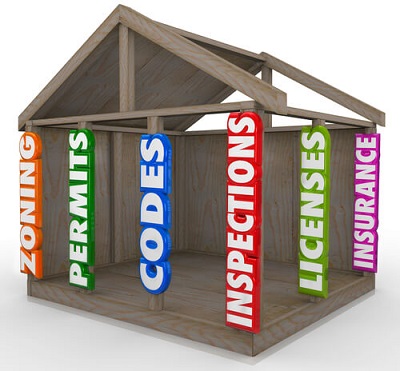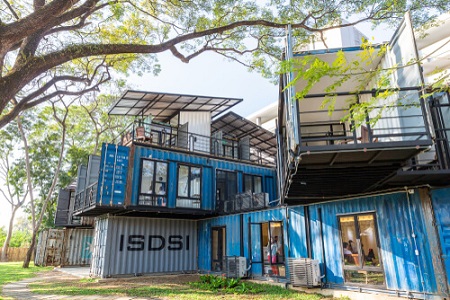Before you can build or own a shipping home, you need to educate yourself about the building and zoning permits in your area. Are you wondering if the same restrictions apply to container homes and stick-build homes? Do you want to know more about the rules that can affect your plans of having a prefab home?
If yes, then you’ve come to the right place. This article will guide you on the different kinds of applicable shipping home building regulations in different areas around the globe and how these can impact you when building your prefab home. Read on to find out more.
Local and national building codes and permits are two of the biggest hindrances you might encounter when trying to build a shipping container home. Before we dive deeper, building codes are regulations and standards your home must meet so you can get an occupancy permit.

According to the Federal Emergency Management Agency, building codes are sets of rules that dictate how structures such as your shipping home containers should be designed, built, changed or maintained. These codes make sure that you and other inhabitants in the shipping container home are safe. There are minimum standards that should be met so that the life of everyone living in that structure is preserved. Ultimately, these regulations aim for the safety of the occupants of the building.
Many states adopt their building codes from the International Code Council (ICC) instead of creating and maintaining their own set of building codes. The enforcement of these codes is done by the local government by reviewing the design plans of your home, checking the construction work and providing permits to build and occupy.
There are several types of rules on how to go about building shipping container homes. Collectively, these determine what you can and can’t build. Understanding the regulations means knowing how these can impact your shipping container home plans.
You must know about the regulations you might encounter depending on where you are. In many areas, you might have to deal with everything under this section while in some areas, you would have just one. You need to ask your developer or agent who will let you know what regulations to follow.

Oftentimes you’d encounter that higher-order regulatory agencies have quite similar regulations as the ones in the lowest levels. On the other hand, some states don’t have statewide building codes as in the case of Mississippi. You should check which bureau or adopting authority handles such codes as these differ from state to state.
Oftentimes you’d encounter that higher-order regulatory agencies have quite similar regulations as the ones in the lowest levels. On the other hand, some states don’t have statewide building codes as in the case of Mississippi. You should check which bureau or adopting authority handles such codes as these differ from state to state.
If you have built your shipping container home in this area prior to the annexation, more often than not, you are exempted from the new regulations. The best thing to do is ask around if there are plans of incorporation before you purchase land. You need to remember, though, each municipal has different local municipal codes. For example, if you wish to build your shipping home in an area prone to forest fires, then, that municipality would have stricter fireproofing regulations.
Building regulations are not much of a concern on this level except for the implementation of urban growth boundary (UGB), which promotes urban development. UGB is the dividing line between urban areas and the surrounding rural area. For example, in Oregon, there is no development of the outer rural boundaries surrounding a city for 20 years to promote effective use of the land area within the city limits.
More often, agencies at this level are more concerned with state security, health, and other general conditions.
This is also the national level for the non-federal government. Its role is to make sure that the general housing regulations are followed.
The building codes differ from state to state. There are several factors why this is so:
Areas in the city or town are divided by zones. This also determines the kind of structure that can be built there. This allows the local government to control and plan the kind of buildings in a particular zone. Most of the time, local governments divide the zones into either residential or commercial. Notice that shops selling liquors are nowhere to be found near schools. This is an effect of zoning.
Come 2021, the International Code Council (ICC) will include shipping containers in its 2021 International Building Code. What this means is that, for states and localities that adopt the IBC guidelines, there will be separate standards for ISO containers. Shipping containers, by then, are treated similarly as any other building material. There is no need to look into the Alternative Means and Methods protocol section of the IBC guidelines. This section includes building methods and materials that have not yet been covered in the IBC guidelines.
Building codes refer to the standards required for a particular housing type. In other words, how the building should be built. On the other hand, building permits allow you to build in compliance
with the codes mentioned earlier. Typically, you are given a permit if complied with the building codes.
In the US, some states have their own building codes like that of the Massachusetts State Building Code. However, most countries base their building codes on the International Residential Code and International Building Code.
Otherwise known as restrictive covenants, these are the requirements provided by the developer so as to ensure uniformity of design and other features of structures around the neighborhood. Sometimes you’d also encounter homeowner’s association (HOA) rules. Unlike deed restrictions that are permanent, the HOA can have a referendum and can be changed.
This means the maximum allowable space required. It also includes the maximum number of bedrooms you are allowed to add. This can include the demolishment of certain parts of the house.
This refers to the distance from the house to the property line. It also includes the setbacks and the distance from neighboring structures.
This refers to the allowable depth, thickness, and materials to use for the foundation.
This refers to the number of smoke detectors and carbon monoxide installed in the container home.
This refers to the details of the electrical and plumbing designs.
Otherwise known as restrictive covenants, these are the requirements provided by the developer so as to ensure uniformity of design and other features of structures around the neighborhood. Sometimes you’d also encounter homeowner’s association (HOA) rules. Unlike deed restrictions that are permanent, the HOA can have a referendum and can be changed.

Make sure you educate yourself about your local building codes and zoning laws. Research online or ask other homeowners. An important part of this stage is to contact your local code officials to shed some light on the restrictions and guidelines.

Ask around what department or bureau they belong to as these differ from one municipality or city to the other. A meetup can save you from potential problems arising from the construction of
your shipping home. This would also determine whether there are other permits and requirements needed.
Make sure that this is duly and properly filled in before submitting it. Also, make sure that you have the other pertinent forms necessary for the approval of your prefab home. Generally speaking, you are required to submit a local application form and fee, a project plan and other local requirements such as photographs, blueprint, energy calculations, and the likes. Remember, each city or municipality can require more depending on the need of the area.

Make sure that you already have your building permit on hand before the shipping home construction. There might be separate permits for electricity, plumbing, air-conditioning, and heating.

You will be advised by your local building officials on the number of inspections required. If you have a contractor, it would be his responsibility to comply with local building codes. Always check for the inspection approvals. Take note of the building permit, inspection card of the permitting official and the approved stamped set of construction done by the permitting official.


If you are in the United States, you’d discover that there is no clear-cut system of restrictions for shipping container homes. It really depends on the local government. Some states are more lenient with shipping container homes. These are
Restrictions depend on the city where you are. For example, in Christchurch, the city council is cracking down structures that are not visually appealing, including shipping container homes. Also, restrictions in this city include a 1-meter setback and an 8m height limit for shipping container home installation. For noncompliance, you might be fined from $300 to $1,000. You would be informed to fix the structure within a period before you get fined.
Having shipping container homes in Auckland needs you to connect with the local authority for permits, calculations, and the likes. If you declare it as a temporary living unit, you might only be allowed for a certain length of time. You are only allowed to put the shipping container home on wheels.
However, if this is just going to be a one-container home, no building consent is needed if you put on the ground but you need consent for the plumbing, heating, electricity and the likes.
In Canada, a building permit must be in place before having a shipping container home. This should be from 160 to 320 square feet. Anything beyond 10 square meters requires a building permit. Shipping containers are also subject to zoning and building restrictions. You need to check the zoning bylaw of that city. You can get a building permit within 20 days.
Having multiple containers as home means you need to apply for planning permission. Otherwise, it would be considered as a temporary dwelling so no planning permission is required.
Shipping container homes have restrictions and guidelines much like a traditional home. These codes differ from one location to another. You have to talk to a shipping container home builder to know more about the details. Or you can find solve your confusions here in container homes FAQ.



Copyright © 2019 JJC ENTERPRISE CO.,LTD. All Rights Reserved.

Leave a Reply
Your email address will not be published. Required fields are marked *